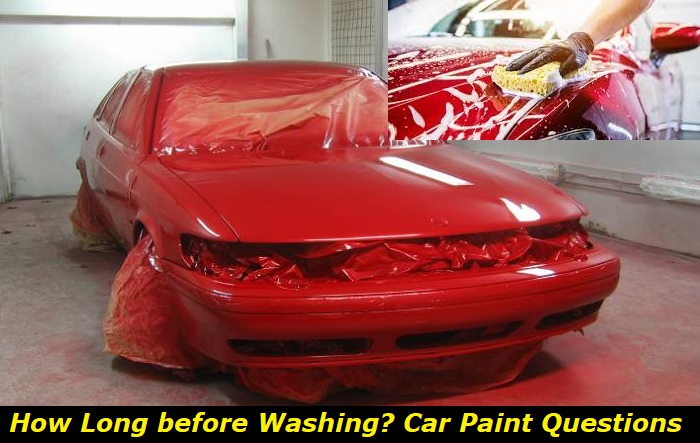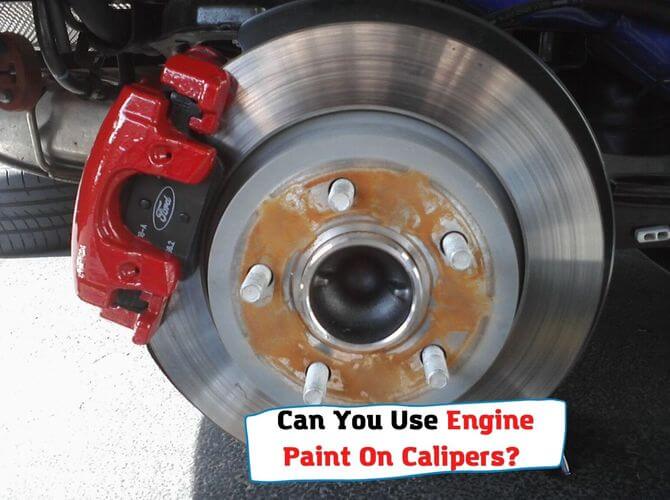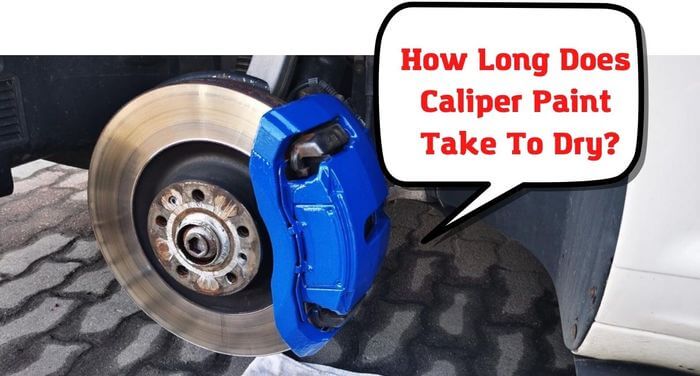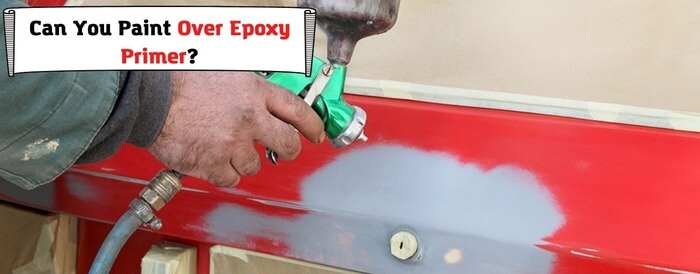Knowing how long car paint dries before washing is essential to maintaining the longevity and quality of your car’s exterior. After a fresh application of paint, it is necessary to allow the paint adequate time to cure before exposing it to elements such as water and soap. The drying time varies depending on the type of paint used and environmental factors, but ensuring that paint is fully set before washing is key to getting a lasting, superior finish.

Understanding car paint components and drying times will enable you to appreciate the science behind the process. Additionally, being aware of various factors that can influence the drying time aids in managing your expectations and precautions accordingly. In the forthcoming sections, we will be exploring these topics in detail, along with practical tips on how to speed up car paint drying time, and signs to look out for to know when it’s safe to wash your car after painting.
Understanding Car Paint: Ingredients and Drying Times
At its most basic level, car paint consists of three main components: pigment, binder, and solvent. The pigment gives the paint its color and can be natural or synthetic. It is finely ground to produce a smooth finish when applied. The binder, or resin, holds the pigment particles together and provides adhesion to the surface painted. The solvent controls the flow and application of the paint, making it sufficiently liquid to be spread evenly.
Now, let’s delve deeper into the process of car paint drying and how long it typically takes. Car paint doesn’t solely “dry” – it cures, hardens, and reacts with the air once it’s applied. Depending on the type of paint used – be it one-stage (single coat), two-stage (base coat/clear coat), or three-stage (base coat, mid-coat, and clear coat) – the drying times will vary.
In general, car paint may touch dry in 1 to 2 hours, but this doesn’t mean that it has cured completely. Curing can take anywhere from a few days for basic enamel paints to up to a month for more advanced paints with longer hardening times. It’s crucial to understand that the dry-to-touch stage and fully cured stage are significantly different, with full cure times requiring more patience and caution to ensure optimal outcomes.
Various Factors Affecting Car Paint’s Drying Time
When it comes to the drying time of car paint, several factors come into play. One of the key factors is the type of paint used. There are different types of car paints available in the market, such as lacquer, enamel, urethane, and others, each with its own drying and curing times.
An equally important factor is the ambient temperature and humidity. Optimal temperatures for paint drying are generally between 70 to 80 degrees Fahrenheit, while humidity should ideally be between 40 to 70%. Conditions outside these ranges can prolong the drying and curing process. For instance, cooler, more humid environments can slow down drying times significantly.
We also can’t ignore the thickness of the paint layer. A thicker application of paint will naturally take longer to dry, as compared to a thin, evenly spread layer. It’s for this reason that multiple thin layers of paint are applied for a car’s paint job instead of one thick one.
Another determining factor is the use of hardeners and accelerators. These additives can greatly speed up the drying time. However, it’s important to note that they may also influence the overall finish and durability of the paint.
Finally, air circulation also plays a role in how quickly car paint dries. Properly ventilated spaces can help carry away moisture and solvent fumes, accelerating the drying process.
It is crucial to consider these factors when painting your car or scheduling a wash post-painting. Understanding them will help you make more informed decisions and ensure better maintenance of your car’s aesthetic appeal.
Process of Car Paint Drying: A Step by Step Guide
Pondering the whole life cycle of car paint application and drying is fascinating. It is a delicate sequence of events that require precision and patience. Let’s go through the step by step process of how car paint dries.
The journey begins once the paint is sprayed on the car’s surface. This fresh layer of paint is wet, liquid, and shiny. During the application, the paint settles onto the surface and fills the microscopic roughness of the metal, adhering closely to it. The adhesion process happens quite rapidly, usually within a few minutes after the application.
However, the paint is still susceptible to damage, which leads us to step two – the ‘Flash-off’ period. This phase allows the solvents in the paint to evaporate, causing the paint to lose its wet appearance. The duration of this phase can vary depending on the paint type and environmental conditions, but it typically takes between 20 minutes to an hour.
Following the ‘Flash-off’ period, we transition into the drying phase. During drying, a chemical reaction known as ‘cross-linking’ occurs, wherein the paint molecules bond together to create a solid film. This freshly formed film constitutes the actual paint layer that gives your car its popping color and shine. In an ideal environment and under standard conditions, this stage can last between one to two hours.
Last but not least, the final step is the curing phase. In this stage, the paint solidifies completely. It strengthens and becomes resistant to damage, making the car ready for use and exposure to elements. The curing process can take anywhere from a few days to a month, depending on factors such as temperature and humidity.
So, as you’ve learned, while the entire car painting process is labor-intensive, the drying phase is equally crucial. The car’s paint needs to undergo all these stages properly and fully set before it’s ready to face the world. This understanding is fundamental for you to respect and wait for the process to avoid unwanted damage or less than a desirable outcome.
Tips to Speed up Car Paint Drying Time
While it’s important to provide adequate time for your car’s paint to dry completely, there are certain practices that can help speed up the drying process. One of the most effective ways is to ensure good ventilation if the vehicle has been painted in a garage or enclosed space. This is because the movement of air over the surface of the paint can hasten drying time.
Another vital tip is to make use of infrared paint curing lamps. These devices emit infrared light which heats the body of the car, aiding in faster evaporation of solvents in the paint. However, it’s critical to be cautious and maintain a proper distance between the lamp and the car’s surface to avoid any damage.
Apart from these techniques, controlling temperature and humidity can also play a significant role in accelerating paint drying time. Ideal conditions for car paint to dry are a temperature around 70-75 degrees Fahrenheit and relative humidity around 50%. In cooler or more humid conditions, drying time might extend.
Lastly, it is worth mentioning that the type of paint used can also influence drying time. Water-based paints generally dry faster than oil-based ones. Therefore, for a faster drying process, you might want to consider using a water-based paint. Though these methods won’t miraculously cut down the drying period to mere minutes, they can certainly help shave off a few precious hours from the total drying time.
When is it Safe to Wash Your Car After Painting?
One of the vital aspects of car maintenance post-paint job is determining the right timeframe to wash your car. The key to this largely depends on the type of paint and the conditions under which it was allowed to cure. Typically, it’s safe to wash a car between two weeks to a month after a new paint job. However, this duration is not a one-size-fits-all and may fluctuate depending on various factors.
Temperature and humidity play a pivotal role in the cure time of car paint. In warmer, less humid climates, car paint typically dries faster, potentially decreasing the time you need to wait before washing. In contrast, the curing process takes longer in colder, more humid climates, necessitating a longer wait period before a car wash.
Another significant aspect to consider is the type of paint used. Acrylic enamel paint, for instance, tends to dry in about 48 hours, but it might need up to a month to fully harden. Urethane paints might dry to the touch in a matter of hours but continue to harden over a few months. Therefore, while your car’s exterior might seem dry and ready for a wash, the paint underneath might still be curing, making it vital to wait for an extended period before washing.
Ensuring that you adhere to these timelines can mean the difference between a flawless, professional-looking paint job, and a paint job that quickly chips and peels. Always consult with your paint professional or the paint manufacturer for specifics about when it’s safe to wash your car after painting.
- Can You Unmix Paint: Techniques, Consequences, Alternatives - February 23, 2024
- Does Primer Need to be Mixed? Effective Primer Application - February 22, 2024
- How to Make Old Paint Usable Again: Retrieving and Preserving Paint - February 21, 2024



